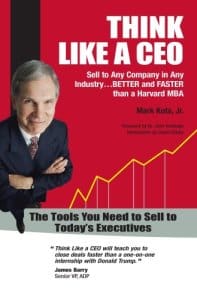I’d been interacting with Mark Kuta, who works for Oracle in the Value Chain Planning group, and he sent me a book he wrote called Think Like a CEO. The book seems to be directed at sales people; the subtitle is “Sell to Any Company in Any Industry… Better and Faster than a Harvard MBA.”
But really there is great content for supply chain professionals. The book probably should have been titled “Finance for Dummies” – Mark does a good job of making core finance concepts much, much easier to understand.
For me, one thing this book did was crystalize why CEO’s can make decisions that may run counter to supply chain best practices. Supply chain professionals know that achieving target service levels with the minimum amount of inventory should always be our goal. We know this in our bones.
But top executives don’t know this. That is because more inventory can actually improve the profitability of a manufacturer!
Here is why. Cost of Goods Sold (COGS) are calculated by subtracting the ending inventory levels from beginning inventory, new inventory purchases, and the cost of converting raw materials and WIP into finished goods. So the higher the ending inventory level, the more you are subtracting from the final COGS number, and the lower your total COGS are.
And because Gross Profit equals Sales minus COGS, the less you are subtracting from Sales, the higher your gross profits are.
How could this be? It is because inventory is viewed as a current asset; and a current asset is defined as cash and whatever can be turned into cash within 12 months. So basically a company can operate fat and sloppy and be rewarded, at least in the short term, with better profits. At some point however, it catches up with the company when they have to write down obsolete inventory. Historically, this was often done when a new CEO took control of the company.
Projects that involve reducing a company’s inventory, perhaps based on the implementation of a supply chain planning solution or a Lean program, provide a good example of why “Cash is King.” While unnecessarily high inventory levels can juice profits, this adversely affects a company’s cash flow position. Thus, in conclusion, when it comes to justifying a Lean or supply chain planning program, supply chain professionals should focus on the cash flow impacts more than cost reductions.



















Leave a Reply